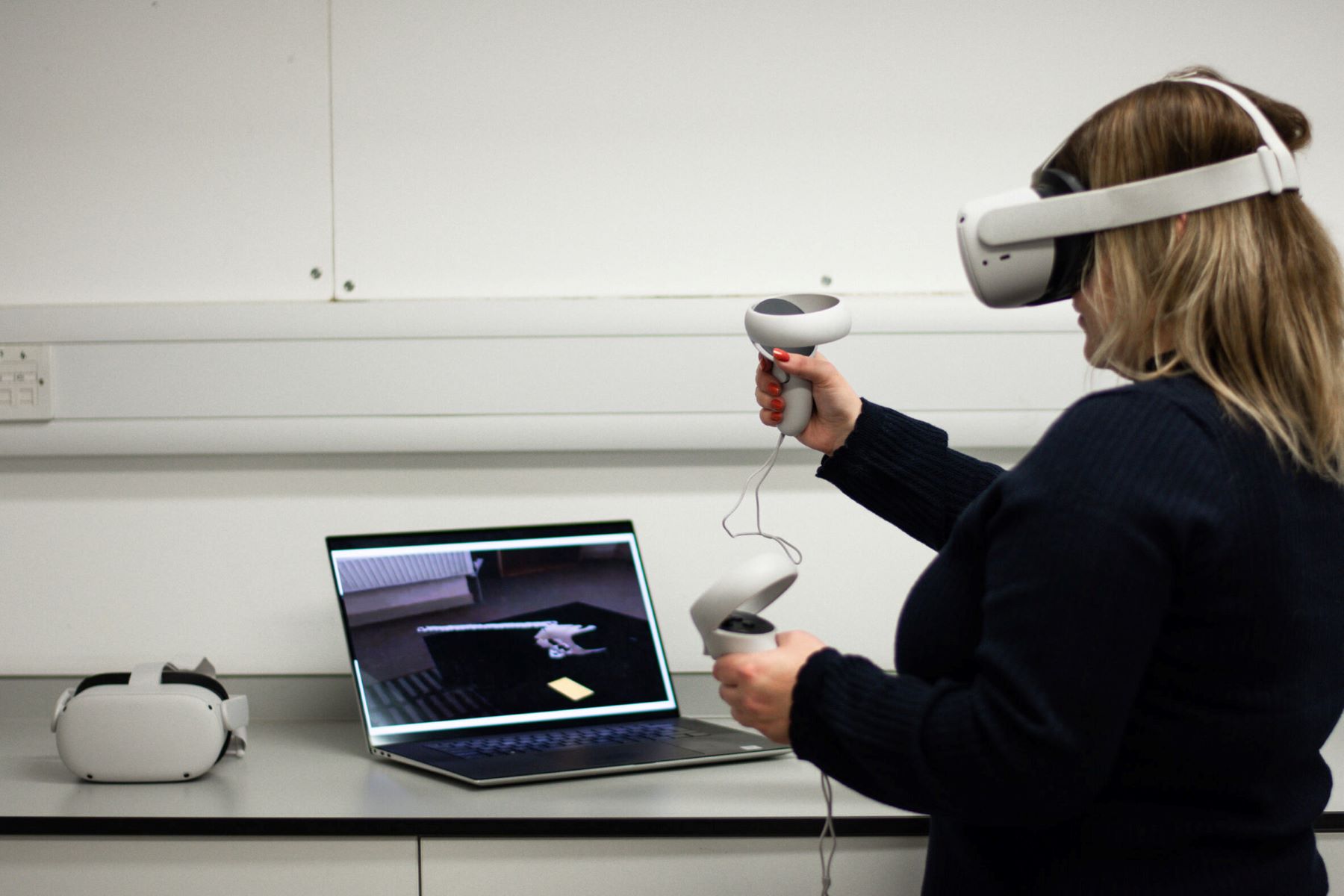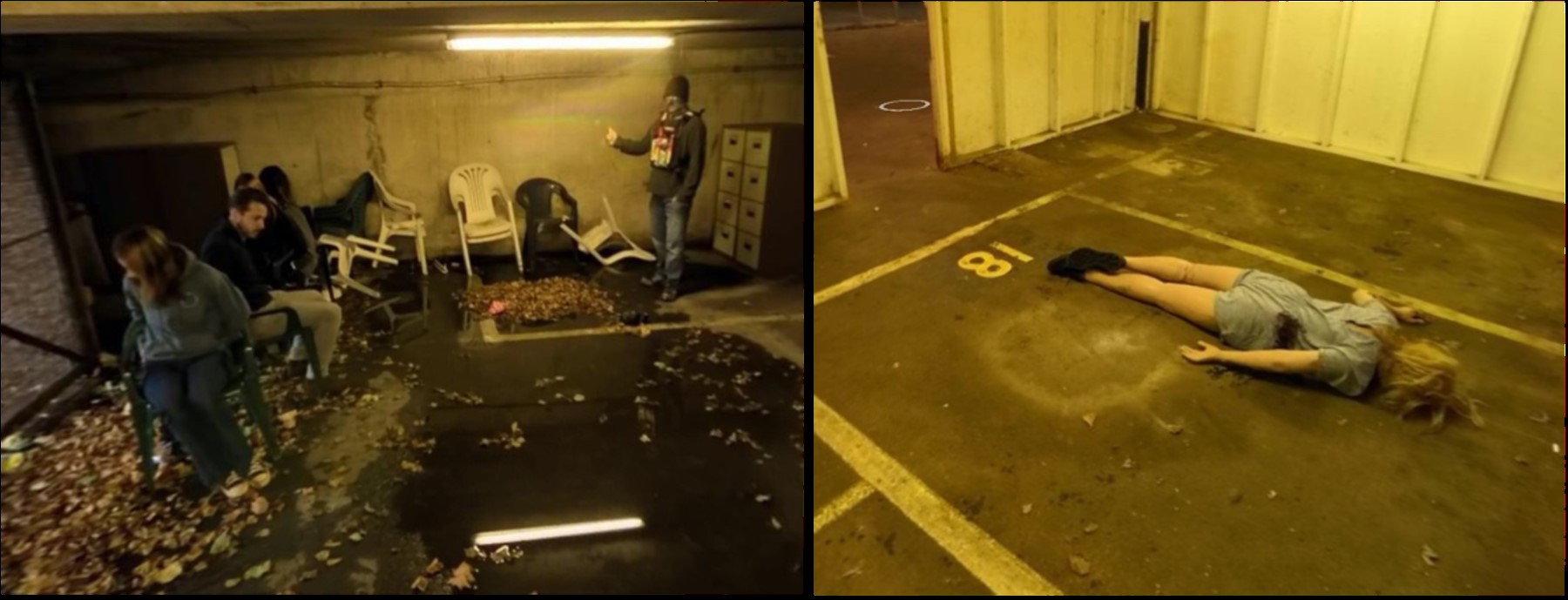
Selina Robinson, Senior Lecturer and Programme Leader for Forensic Investigation, and Brandon May, Criminology Lecturer at Winchester have been working with academics from the University of Portsmouth to look at ways in which VR technology can provide realistic 3D simulations of real-world situations to help train the emergency services.
The UK has experienced several terrorist attacks, from the 2005 London bombings, to the devastating events at Manchester Arena and London Bridge in 2017. These tragic incidents not only resulted in the loss of innocent lives but were also immensely challenging for emergency response teams.
Each of these events required coordination between several different emergency services: the police, fire services and medical teams. Combining expertise across emergency response teams is extremely demanding.
For instance, the ability to collaborate effectively and make ethical choices is crucial for minimising harm and saving lives. However, there’s often little time in which to do so. Responders are required to make split-second decisions that can mean the difference between life and death.
Therefore, decision making by emergency response teams is a high stakes game that can influence the outcomes of different crises. Emergency personnel are often required to make quick, well-informed decisions under extreme stress and with limited resources.
We have been part of a team from the universities of Winchester and Portsmouth investigating how virtual reality (VR) can help prepare responders for these scenarios. We’ve also been looking at how to make the technology more affordable.
There are already training scenarios designed to improve what’s known as the “situational awareness” of the risks in an emergency situation – for instance, the ability to quickly grasp and understand the risks and dynamics of an incident. However, effectively implementing them necessitates competent decision making.
A notable obstacle is decision inertia – the inclination to stick with an existing plan, even when better alternatives emerge or the situation evolves. This inertia can have psychological origins, including the fear of making mistakes or a reluctance to stray from established protocols.
In emergencies, this can lead to less-than-desirable outcomes, such as delayed action and a failure to distribute the right resources where they’re most needed.

A screen capture from the immersive desktop virtual reality scenario, depicting a terrorist scenario.
To better understand and address these challenges, researchers and those on the front line are increasingly turning to immersive technologies, such as VR. VR technology can provide users with realistic 3D simulations that closely mirror real world scenarios. This makes it an invaluable tool for studying decision making under high stress.
For emergency responders, there are many benefits to working with VR. Firstly, it can act as a training simulator, allowing first responders to practice critical decision making during a crisis scenario played out in a simulated environment and with a VR headset. Secondly, it can significantly reduce errors in the real world. Given these advantages, the integration of VR in emergency training could be revolutionary.
For example, in real world emergencies, decision makers can swiftly identify patterns and cues, such as how best to respond to an unattended bag in a crowded area. These cues can in turn activate what are called mental scripts – predefined sequences of actions or solutions that have proven effective in similar situations in the past. This can minimise harm to both personnel and the public.
High fidelity (highly realistic) simulations offer the most authentic and immersive training experiences. However, despite the numerous advantages of VR in training employees and supporting real time decisions, its widespread adoption faces a major hurdle – a substantial price tag.
Industry solutions such as the VR development tool Unreal Engine, which forms the basis of many virtual environments, have been incredibly useful for training organisations. By practising their response strategies in virtual environments, response teams improve their resilience to unexpected situations and their efficiency when faced with extreme events. However, the financial burden of such advanced systems can be prohibitive for many emergency response organisations. Some of these organisations operate on limited financing, such as austerity budgets.
Motivated by the need for more cost effective options, we are working with other researchers to investigate more affordable solutions that don’t sacrifice training quality. We have been developing proof of concept designs for VR systems that can fit on a desktop, using a laptop for example. Similar designs have been shown to be effective in recreating other types of event.
By harnessing 360-degree cameras to create immersive simulations based around simulated terrorist events, desktop VR can closely mirror real world emergency scenarios.
We have recently produced our preliminary findings. They show that desktop VR can be a particularly valuable tool in training. This realism is pivotal in influencing users’ decision making. For example, VR-based training, especially the interactive kind that responds to a user’s input, has been shown to outperform traditional video-based training methods.
When viewed through the lens of decision inertia, this suggests that immersive VR effectively emulates the high-stress, complex conditions under which emergency responders operate.
These immersive simulations can also recreate the psychological processes that contribute to decision inertia – a major challenge in real world crises. This applies to the cheaper, desktop versions of the simulations too. With this in mind, the value of VR emerges not just as a training tool, but also as an instrumental medium for exploring and understanding decision making processes.
Using these immersive technologies provides an alternative, realistic platform with similar performance outcomes to conventional in-person or video-based training.
By leveraging more cost-effective VR technologies, such as desktop VR, emergency response organisations can provide high quality training that enhances the decision making skills of their employees. Immersive simulations can also create recognisable events that activate their mental scripts – the predefined actions that have proven useful in similar, past events.
This opens up possibilities for the wider adoption of VR in emergency response training, making it more accessible for agencies and organisations with different budgets.
This article was first published in The Conversation. See more University of Winchester contributions at our TC homepage
Back to media centre